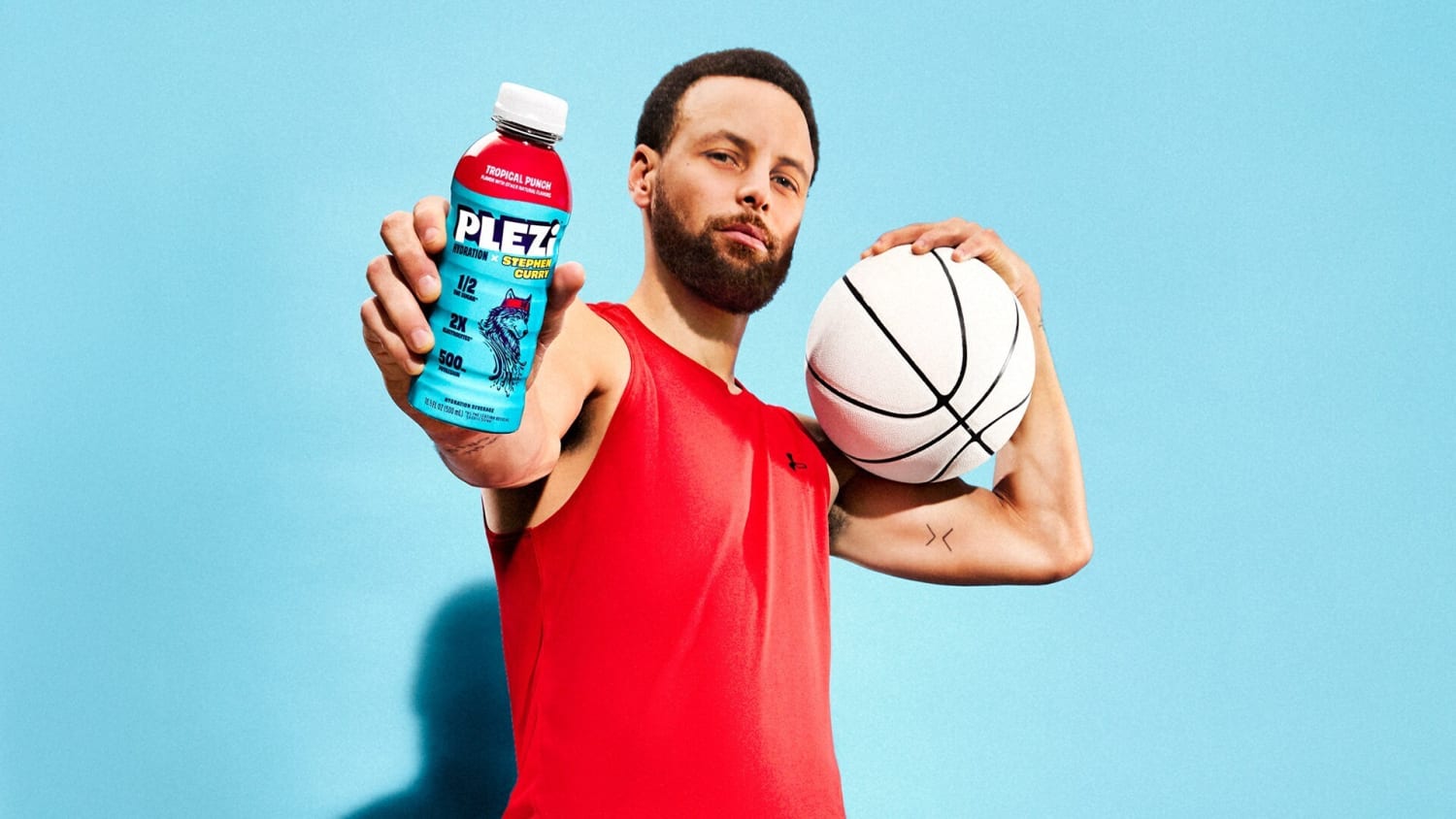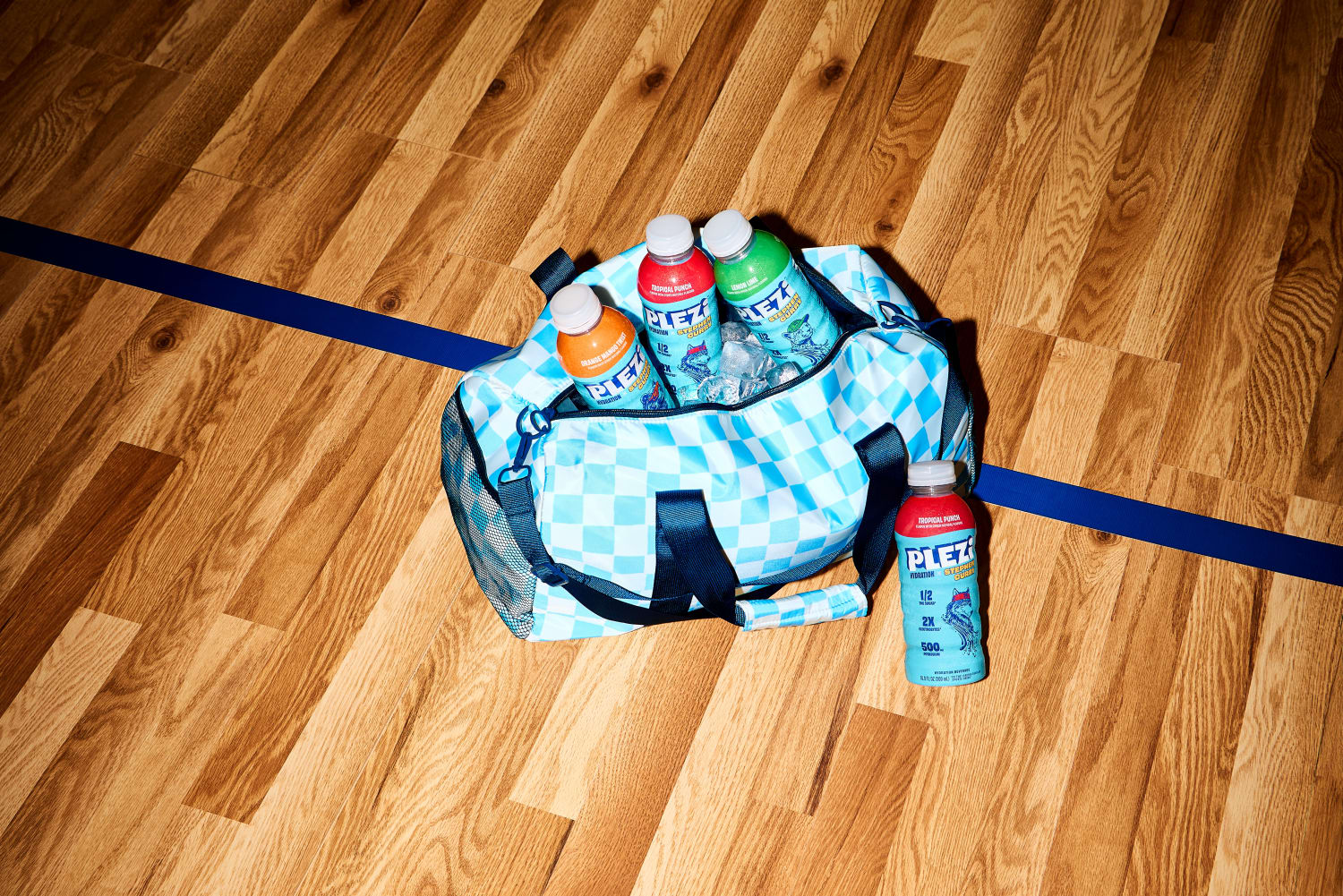A slew of launches elevate the hydration category, with demand driven by factors that span a desire to optimize sports performance, improve focus, and to cater to GLP-1 users’ specific hydration needs. According to Future Market Insights, the United States hydration supplement market is projected to reach US $14.4 billion by 2034.
New startups shake up the billion-dollar hydration market with thirst-quenching, health-inducing beverages.
Plezi Hydration X Stephen Curry. Courtesy of Plezi Nutrition
Tapping into consumers’ need for hydration after intensive exercise, Michelle Obama’s Plezi Nutrition brand in March collaborated with NBA player Stephen Curry to debut a line of hydration drinks – Plezi Hydration X Stephen Curry – that offer twice the electrolytes of the leading regular sports drink, with no added sugar, less sodium than comparable hydration drinks, and 500 mg of potassium, which the brand describes as “a critical electrolyte” that helps with muscle recovery.
And targeting a more trend-led consumer, podcaster Alex Cooper of Call Her Daddy fame, launched Unwell Hydration in January. Described by the Gen Z-centric media and lifestyle brand as tapping into its pledge “to help you live your best unwell life – unfiltered, unapologetic, and a little unhinged.”
Unwell Hydration by Alex Cooper. Courtesy of Unwell Hydration.
Meanwhile, British brand Punchy Drinks launched its Punchy hydration range in 2024, which come in flavors spanning Mexican lime, mango, and blueberry. In the brand’s white paper on hydration, Punchy Drinks notes that “hydration isn’t just about drinking water. It also involves balancing electrolytes, which play a key role in maintaining your fluid balance, supporting muscle function and facilitating nerve impulses.” Diving further into the category, Punchy has launched a line of Hydration Reset sachets, too.
Dubai-based Humantra, also offer hydration sachets containing six electrolytes and come in various flavors including lychee and Himalayan lime. During Ramadan this year (February 28-March 29), the brand created a “drinkable billboard” displayed in City Walk, Dubai. A drinks dispenser was embedded in the billboard, allowing passerbys to break their fast and hydrate with Humantra.
Images courtesy of Punchy
And while hydration sachets aren’t directly marketed at GLP-1 users, this demographic’s specific needs are also driving the category. When using GLP-1s, optimizing hydration helps to replace the fluids that can be lost to diarrhea and vomiting, both common side effects. According to SoWell, a brand that creates health solutions for GLP-1 users including their own electrolyte sachets, electrolytes can combat the suppression in thirst that can come with GLP-1 drugs. The brand claims that water alone isn’t enough, with one’s body needing “the right ratio of electrolytes—including magnesium, sodium, and potassium—to deliver…hydration into your cells.”
Hydration was a top selling category in the US mainstream multi-outlet channel in the year to October 2024, reaching sales of US $639.1 million and growing at 32.8% compared to the previous year, according to data from Spins LLC, published in Nutritional Outlook. Indeed, 52% of those surveyed for VML’s the "Future 100: 2025" report said that keeping well hydrated was one of the things they’re planning to do more of over the coming year.
The Intelligence take: Hydration is the latest addition to an ever-growing list of wellness goals, and brands are driving this, with products that zero in on electrolytes and nutrients that play into the prevailing mood of relentless self-optimization. And as our Future 100: 2025 report found that 23% of people globally say they’re cutting back on alcoholic drinks while 18% are spending less on soft drinks, this leaves a clear space for hydration products to emerge as a rising beverage category.
Please provide your contact information to continue.
Related Content

Circadian snacking









